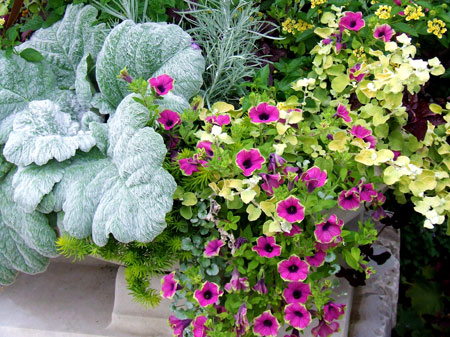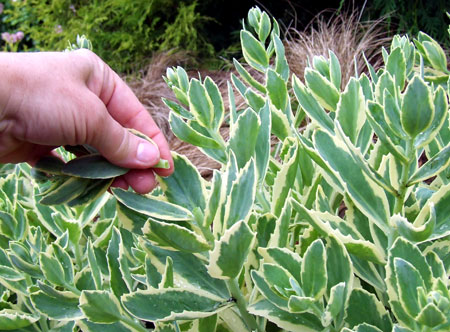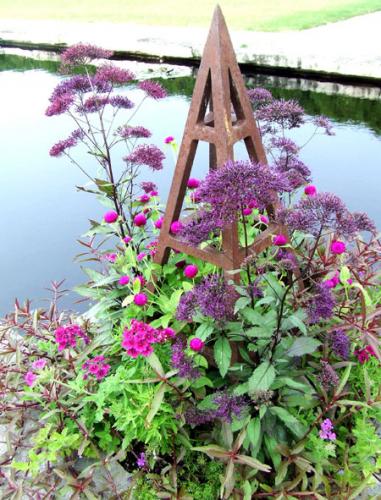Summer flower care keeps your plants blooming strong
Take steps now to deadhead and prune summer annuals and perennials to increase late-season enjoyment.
As the adage goes, “April showers bring May flowers,” but here it is July and we still are receiving abundant rainfall. While the moisture is a refreshing change over last season, excess moisture may cause plant stems to elongate at the expense of sturdiness. Some simple measures recommended by Michigan State University Extension can be taken in the annual or perennial garden to stiffen up plants and not allow them to become top-heavy or leggy.
Pinch an inch or two!
Pruning back top-heavy perennials such as sedum will encourage branching and delay bloom. Plants such as sedum, sneezeweed and chrysanthemum may already be at the point where they are setting blooms, yet can still benefit from light pruning. Using your fingers or hand pruners, just cut off the top couple of inches to a couple of leaves where new side branches will emerge in several weeks.

Pinching leggy growth on annuals can also be done at this time. Begonia, celosia and coleus have abundant dormant buds along their stems. When the tip of the plant is removed, these buds flush out and make the plant full and robust. Flowers such as petunia will branch out with improved bloom performance with a hard pruning half-way through the season. Once pruned, the newly expanding growth will reward the gardener with fresh blooms and a tidy appearance. Annual vines such as Ipomea (sweet potato vine) can be very aggressive and will tolerate aggressive pruning also.

Off with their heads
Deadheading is a form of grooming. When spent blooms are removed from the plants, they not only look better, but the plant does not waste valuable energy resources investing in seed production.
Lean on me
Most annuals and perennials will stand up on their own if they are getting the right amount of sunlight. Over fertilization and abundant water may cause some plants such as Rudbeckia ‘Indian Summer’ (black-eyed Susan) to topple over with heavy blossoms. Individual stems can be supported with commercial wire stakes and a soft string tie. Panty hose also makes a good material to tie and support plants without binding them. Commercial cages are also available, but ornamental obelisks are also a great option to place in between “flopping” plants.

For more information on a wide variety of smart gardening articles, classes and events, visit www.migarden.msu.edu.



 Print
Print Email
Email



